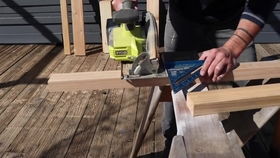How to Sand Blast: A Comprehensive Guide
Sandblasting is a versatile technique used for cleaning, finishing, and preparing surfaces. Whether you’re a DIY enthusiast or a professional, understanding the process can help you achieve professional results. In this guide, we’ll walk you through the steps, safety precautions, and tips to ensure a successful sandblasting experience.
Understanding Sandblasting

Sandblasting involves propelling abrasive particles at high speeds onto a surface using compressed air. The abrasive material, typically sand, glass beads, or steel shot, removes rust, paint, scale, and other contaminants. This process is widely used in various industries, including construction, automotive, and metalworking.
Equipment Needed for Sandblasting

Before you start sandblasting, gather the necessary equipment:
| Equipment | Description |
|---|---|
| Sandblasting Cabinet | A sealed chamber that protects the operator from the blast and contains the abrasive material. |
| Compressor | Supplies compressed air to the sandblasting gun. |
| Sandblasting Gun | Delivers the abrasive material at high speeds to the surface. |
| Abrasive Material | Particles used to remove contaminants from the surface, such as sand, glass beads, or steel shot. |
| Masking Tape | Protects areas you don’t want to be blasted. |
| Safety Glasses | Protects your eyes from debris. |
| Respirator | Protects your lungs from dust and fumes. |
Preparation for Sandblasting

Before you begin sandblasting, ensure the following:
-
Choose the right abrasive material for your project. Different materials are suitable for various applications, such as rust removal, paint stripping, or surface finishing.
-
Prepare the surface by cleaning it thoroughly. Remove any loose debris, dirt, or grease.
-
Mask any areas you don’t want to be blasted, such as decals, logos, or sensitive components.
-
Secure the surface to prevent movement during the sandblasting process.
The Sandblasting Process
Follow these steps to sandblast a surface:
-
Connect the sandblasting gun to the compressor and adjust the pressure to the desired level.
-
Load the abrasive material into the sandblasting cabinet.
-
Put on your safety gear, including safety glasses, respirator, and protective clothing.
-
Position the sandblasting gun at a 45-degree angle to the surface.
-
Start the compressor and begin sandblasting the surface. Move the gun in a consistent, overlapping pattern to ensure even coverage.
-
Monitor the process and adjust the pressure or abrasive material as needed.
-
Stop sandblasting when the desired surface finish is achieved.
Safety Precautions
Always prioritize safety when sandblasting:
-
Ensure proper ventilation to avoid inhaling dust and fumes.
-
Use safety glasses to protect your eyes from debris.
-
Wear a respirator to protect your lungs from dust and fumes.
-
Protect your skin with appropriate clothing, such as gloves and a mask.
-
Keep a fire extinguisher nearby in case of a fire hazard.
Post-Sandblasting Care
After sandblasting, follow these steps to ensure the best results:













